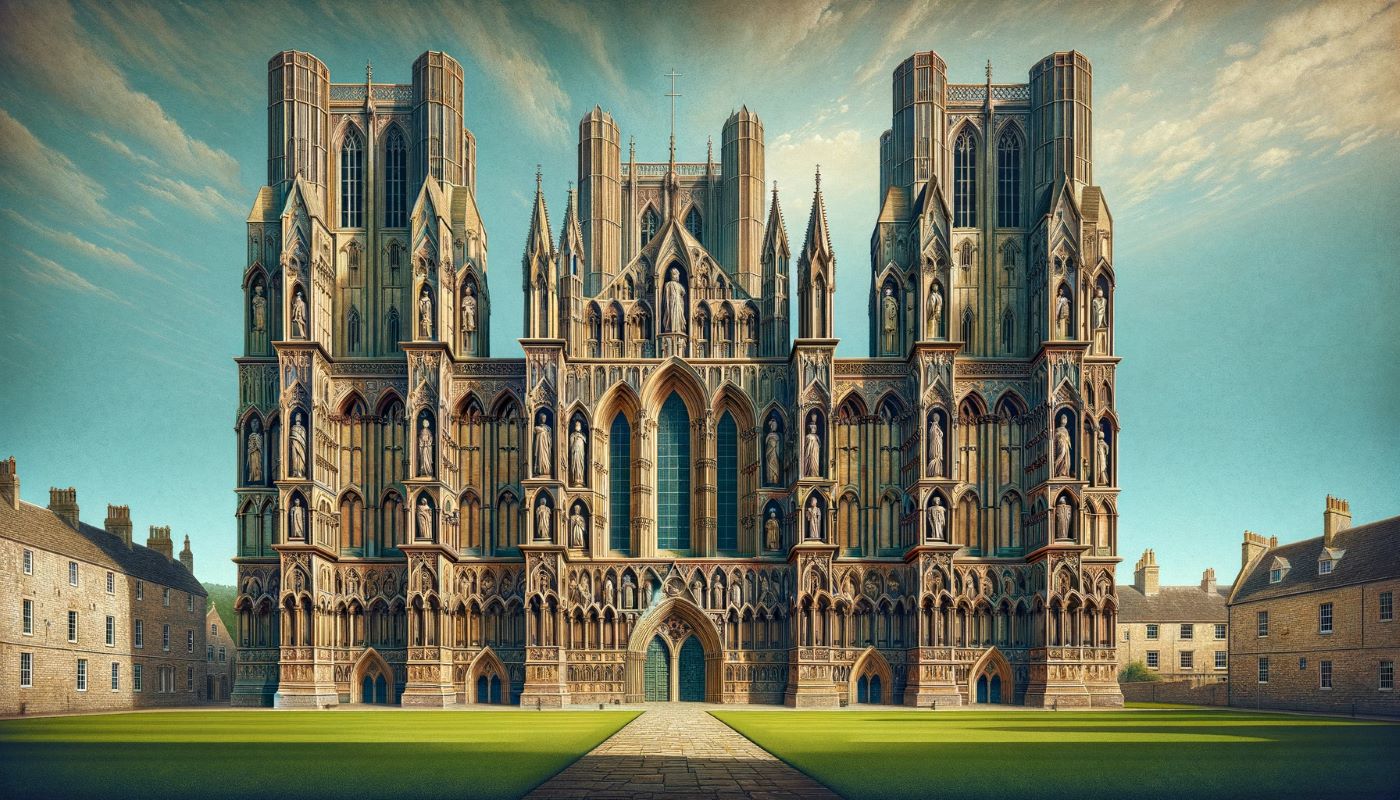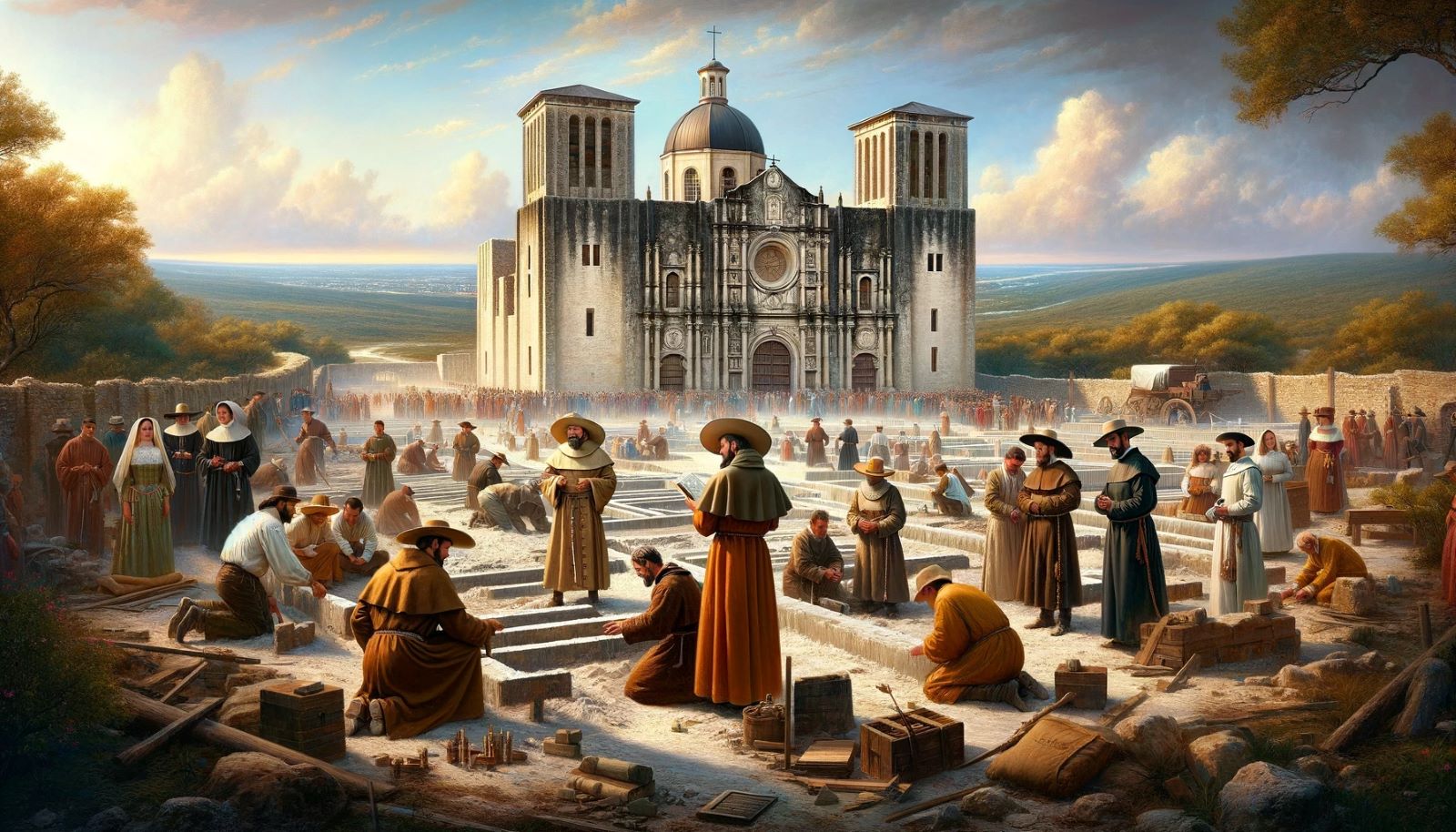Home>Arts and Culture>When Was Durham Cathedral Built


Arts and Culture
When Was Durham Cathedral Built
Published: February 18, 2024
Ericka Andersen, an editor at Christian.net, expertly merges digital strategy with content creation, focusing on faith and societal issues. Her communication skills enhance the platform's engaging narratives, fostering meaningful dialogue on belief's impact on society.
Discover the rich history of Durham Cathedral, a masterpiece of medieval architecture and a symbol of arts and culture. Learn about its construction and significance.
(Many of the links in this article redirect to a specific reviewed product. Your purchase of these products through affiliate links helps to generate commission for Christian.net, at no extra cost. Learn more)
Table of Contents
Introduction
Durham Cathedral stands as a testament to the enduring legacy of medieval architecture and religious devotion. Nestled on a strategic promontory overlooking the River Wear in County Durham, England, this awe-inspiring structure has captivated the hearts and minds of visitors for centuries. Its imposing silhouette, characterized by the majestic central tower and the intricate tracery of its stained glass windows, serves as a beacon of spiritual and historical significance.
As one of the most cherished examples of Norman architecture, Durham Cathedral holds a revered place in the annals of English heritage. Its construction, which commenced in the late 11th century, represents a remarkable feat of engineering and craftsmanship, reflecting the unwavering dedication of the medieval masons and artisans who toiled to bring this grand vision to life.
Beyond its architectural splendor, Durham Cathedral embodies a rich tapestry of historical narratives, from the turbulent times of the Norman Conquest to the enduring influence of the Benedictine monks who once called this sacred edifice their home. The cathedral's hallowed halls have borne witness to royal ceremonies, scholarly pursuits, and the ebb and flow of societal evolution, making it a living testament to the resilience and adaptability of human endeavor across the ages.
In the following sections, we will delve into the captivating history, construction, and architectural marvels of Durham Cathedral, unraveling the intricate threads of its past and celebrating the enduring legacy it continues to impart upon all who gaze upon its timeless grandeur.
Read more: When Was Lincoln Cathedral Built
History of Durham Cathedral
The history of Durham Cathedral is steeped in the rich tapestry of England's medieval past, intertwining tales of conquest, religious fervor, and architectural prowess. The origins of this venerable edifice can be traced back to the aftermath of the Norman Conquest of England in 1066. Following the decisive Battle of Hastings, William the Conqueror sought to solidify his dominion over the newly conquered lands, leading to the establishment of Norman strongholds and ecclesiastical centers across the country.
In this context, the story of Durham Cathedral unfolds against the backdrop of political intrigue and spiritual ambition. The cathedral's history is intrinsically linked to the vision of William Walcher, the Bishop of Durham, who sought to assert the authority of the Church in the northern reaches of England. Under his patronage, the construction of the cathedral commenced in 1093, marking the beginning of a monumental undertaking that would span decades.
The site chosen for the cathedral held profound significance, perched atop a rocky outcrop known as "The Peninsula." This strategic location not only provided a natural defensive advantage but also symbolized the spiritual ascendancy of the Church, overlooking the surrounding landscape with a commanding presence.
The early years of Durham Cathedral were marked by a fervent dedication to craftsmanship and religious devotion. The skilled masons and artisans, drawing upon Norman and Anglo-Saxon influences, labored tirelessly to erect a structure that would stand as a testament to the glory of God and the authority of the Church. The cathedral's consecration in 1133 marked a pivotal moment in its history, solidifying its status as a beacon of faith and a bastion of ecclesiastical power in the North.
Throughout the centuries, Durham Cathedral weathered the tides of political upheaval and societal change, bearing witness to the tumultuous events that shaped England's destiny. From the dissolution of the monasteries during the reign of Henry VIII to the ravages of the English Civil War, the cathedral stood as an enduring symbol of resilience and continuity, its hallowed halls echoing with the whispers of bygone eras.
Today, the history of Durham Cathedral endures as a testament to the enduring spirit of human endeavor and the enduring legacy of faith and fortitude. Its ancient stones bear the indelible marks of time, each weathered surface and soaring archway a testament to the enduring legacy of medieval craftsmanship and unwavering devotion.
In the following sections, we will delve into the captivating history, construction, and architectural marvels of Durham Cathedral, unraveling the intricate threads of its past and celebrating the enduring legacy it continues to impart upon all who gaze upon its timeless grandeur.
Construction of Durham Cathedral
The construction of Durham Cathedral stands as a testament to the remarkable ingenuity and unwavering determination of medieval craftsmen and artisans. Commencing in 1093 under the patronage of William Walcher, the Bishop of Durham, the cathedral's inception marked the dawn of an ambitious endeavor that would span several decades.
The site chosen for the cathedral, atop a rocky promontory overlooking the River Wear, presented formidable challenges and unparalleled opportunities. The natural defenses provided by the elevated location not only safeguarded the burgeoning structure but also imbued it with a commanding presence, visible for miles around. This strategic positioning underscored the cathedral's significance as a symbol of spiritual and temporal authority, a beacon of faith and a bastion of ecclesiastical power in the North.
The construction process itself was a testament to the mastery of medieval engineering and craftsmanship. The cathedral's design drew upon Norman and Anglo-Saxon influences, resulting in a fusion of architectural styles that endowed the structure with a unique and enduring allure. The skilled masons and artisans, laboring with rudimentary tools and an unwavering dedication to their craft, meticulously shaped the stones that would form the foundation of this grand edifice.
The cathedral's construction unfolded in stages, each marked by meticulous attention to detail and a steadfast commitment to realizing the grand vision set forth by its creators. The soaring arches, intricate vaulting, and ornate carvings bore the indelible imprint of countless hands and hearts, each contributing to the collective endeavor with a fervent devotion to their craft and a reverence for the divine purpose of their labor.
As the cathedral gradually took shape, its towering presence became an ever-present reminder of the enduring legacy of medieval architecture and religious devotion. The completion of the central tower in the early 12th century marked a crowning achievement, solidifying the cathedral's status as a marvel of engineering and a testament to the unwavering spirit of human endeavor.
The construction of Durham Cathedral stands as a testament to the enduring legacy of medieval architecture and the indomitable spirit of those who dedicated their lives to its realization. It remains a living testament to the resilience and ingenuity of the human spirit, a timeless monument to the enduring power of faith and the enduring allure of architectural mastery.
Architecture of Durham Cathedral
The architecture of Durham Cathedral stands as a pinnacle of medieval ingenuity and artistic expression, embodying a harmonious blend of Norman and Anglo-Saxon influences that converge to create a structure of timeless grandeur. The cathedral's design, characterized by its imposing central tower, soaring vaults, and intricate tracery, reflects the collective vision of master craftsmen and artisans who sought to erect a monument to the glory of God and the enduring power of faith.
The cathedral's exterior presents a formidable yet captivating visage, with its massive stone walls rising from the rocky promontory upon which it is perched. The symmetrical arrangement of the towers and transepts, coupled with the rhythmic repetition of pointed arches and decorative moldings, imparts a sense of balance and harmony to the overall composition. The west front, adorned with an array of sculpted figures and biblical narratives, serves as a testament to the artistic prowess of the medieval stone carvers, whose intricate designs breathe life into the weathered stone.
Stepping into the cathedral's hallowed interior, visitors are greeted by a breathtaking expanse of space, illuminated by the soft glow of stained glass windows that adorn the clerestory. The soaring ribbed vaults, supported by slender columns and pilasters, create a sense of ethereal elevation, drawing the gaze heavenward in a testament to the divine majesty that inspired its creation. The nave, with its rhythmic arcade and triforium, exudes a sense of serenity and contemplation, inviting visitors to partake in a spiritual journey through the ages.
The cathedral's transepts, with their intricate rose windows and sculpted capitals, serve as a testament to the enduring legacy of medieval craftsmanship and the enduring allure of religious devotion. The crossing tower, crowned by a lantern spire, stands as a testament to the cathedral's vertical aspirations, reaching skyward in a testament to the enduring power of faith and the indomitable spirit of human endeavor.
In every corner and crevice of Durham Cathedral, the indelible imprint of medieval artisans and architects is evident, each stone and archway bearing witness to the enduring legacy of a bygone era. The cathedral's architecture transcends the boundaries of time and space, inviting visitors to embark on a transcendent journey through the annals of history and the enduring legacy of human creativity.
The architecture of Durham Cathedral stands as a testament to the enduring legacy of medieval ingenuity and the indomitable spirit of those who dedicated their lives to its realization. It remains a living testament to the resilience and ingenuity of the human spirit, a timeless monument to the enduring power of faith and the enduring allure of architectural mastery.
Renovations and Additions
The enduring legacy of Durham Cathedral is not solely rooted in its medieval origins but also in the ongoing efforts to preserve and enhance its architectural splendor. Over the centuries, the cathedral has undergone a series of renovations and additions, each bearing testament to the enduring commitment to safeguarding this venerable edifice for future generations.
One of the most significant periods of renovation occurred in the 19th century, under the guidance of renowned architect Anthony Salvin. His meticulous restoration efforts aimed to address the structural challenges that had beset the cathedral, ensuring its continued stability and grandeur. The restoration work encompassed the meticulous repair of the central tower, the preservation of the intricate stained glass windows, and the reinforcement of the cathedral's foundational elements. Salvin's dedication to preserving the cathedral's original character while fortifying its structural integrity stands as a testament to the enduring reverence for its historical and architectural significance.
In addition to the restorative endeavors, the cathedral has also witnessed notable additions that have enriched its aesthetic and functional dimensions. The Galilee Chapel, added in the 12th century, stands as a testament to the evolving architectural styles and religious practices of the era. Its ornate Romanesque design and the exquisite carvings adorning its entrance serve as a captivating testament to the enduring legacy of medieval craftsmanship.
Furthermore, the evolution of the cathedral's interior has been shaped by the addition of intricate woodwork, such as the exquisitely carved choir stalls and the majestic bishop's throne. These additions, spanning centuries, reflect the cathedral's dynamic role as a living testament to the evolving artistic and spiritual aspirations of the communities it has served.
In recent years, conservation efforts have continued to uphold the cathedral's legacy, employing cutting-edge techniques to preserve its architectural treasures. From the meticulous cleaning of its weathered stonework to the conservation of its priceless artifacts, these endeavors underscore the unwavering commitment to safeguarding the cathedral's timeless allure.
The enduring legacy of Durham Cathedral is not confined to its storied past but is perpetuated through the ongoing dedication to its preservation and enhancement. Each renovation and addition stands as a testament to the cathedral's enduring significance, ensuring that its hallowed halls will continue to inspire awe and reverence for generations to come.
Read more: When Was Chester Cathedral Built
Conclusion
In conclusion, Durham Cathedral stands as a timeless testament to the enduring spirit of human creativity, faith, and resilience. From its humble beginnings in the aftermath of the Norman Conquest to its lofty spires reaching towards the heavens, the cathedral embodies the indomitable legacy of medieval architecture and religious devotion.
The cathedral's rich history, spanning over nine centuries, weaves a captivating narrative of triumph and tribulation, reflecting the ebb and flow of England's tumultuous past. Its construction, a monumental feat of medieval engineering and craftsmanship, stands as a testament to the unwavering dedication of the artisans and masons who labored to bring this grand vision to life.
The architectural splendor of Durham Cathedral, characterized by its soaring vaults, intricate tracery, and imposing towers, continues to inspire awe and reverence, inviting visitors to embark on a transcendent journey through the annals of history. The cathedral's exterior, with its formidable stone walls and sculpted adornments, exudes a sense of timeless grandeur, while its interior, illuminated by the soft glow of stained glass windows, evokes a profound sense of spiritual contemplation.
Moreover, the cathedral's enduring legacy is upheld through ongoing conservation efforts and the addition of architectural treasures, ensuring that its hallowed halls will continue to inspire awe and reverence for generations to come.
Durham Cathedral stands not only as a physical embodiment of architectural mastery but also as a living testament to the enduring power of faith and the indomitable spirit of human endeavor. Its ancient stones bear witness to the resilience and ingenuity of the human spirit, inviting all who gaze upon its timeless grandeur to partake in a transcendent journey through the annals of history.
As the sun sets over the River Wear, casting a golden glow upon the cathedral's weathered facade, one cannot help but be humbled by the enduring legacy of Durham Cathedral, a beacon of hope and inspiration that transcends the boundaries of time and space.














